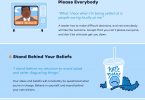aNewDomain.net — Online streaming TV is now a reality in two out of three broadband-capable U.S. homes, studies show. Here’s our Alfred Poor with an analysis.
Remember rabbit ears with bits of tinfoil attached so that you would get a little less snow on Channel 3? Maybe you don’t. The majority of U.S. television households have relied on paid television services — cable and satellite — for quite a while. Lots of folks aren’t even sure how to get broadcast transmissions these days. But even that new reality is undergoing a sea change. Most American broadband-equipped households now watch online streaming TV, with at least one TV hooked up to the Internet, a new study shows.
![A survey by The Diffusion Group (TDG) reports that nearly two out of three U.S. broadband households have at least one television connected to the Internet. [Source: Big Stock Photo]](https://anewdomain.net/wp-content/uploads/2014/02/hands_around_cube_cropped-300x252.jpg)
A survey by The Diffusion Group (TDG) reports that nearly two out of three U.S. broadband households have at least one television connected to the Internet. Image: Big Stock Photo
Or you could be streaming through an Internet-enabled Blu-ray player or video gaming console such as the Xbox or PlayStation. And the new $35 Google Chromecast is only adding fuel to this fire, by letting you control your TV with your smartphone.
According to TDG’s Benchmarking the Connected Consumer – 2014 report, this marks a 19 percent increase in the percentage of U.S. homes with connected televisions. The report also shows that nearly half of the households have at least two televisions that can get content from the Internet.
The rising popularity of streaming services coupled with the low marginal cost of adding such support to devices has made this increasingly appealing for consumers. Whether it’s by using Pandora or Spotify as a convenient replacement for broadcast music radio stations or by getting access to content not available on cable or satellite such as Netfix’s House of Cards or Amazon’s Alpha House, consumers are turning more and more to the Internet for a portion of their entertainment programming.
According to TDG president and director of research, Michael Greeson:
… while not a simple a zero-sum game, we are nearing or at that breaking point where the growing use of broadband-based sources simply chips away at time once spent using traditional sources.”
The massive glacier that is online streaming content continues to push aside the traditional broadcast, cable, and satellite services. This is driving fundamental change in the way that consumers find their entertainment content. Incumbent industries are going to have to be agile if they are to bridge the transition successfully.
For aNewDomain.net, I’m Alfred Poor.
Based in bucolic Bucks County PA, Alfred Poor is a senior technologist here at aNewDomain.net. A 30-year tech journalism vet, he’s internationally renowned for his coverage of displays. He is easily distracted by shiny, sparkly gadgets and that’s why he is covering consumer tech for us, too. Contact Alfred at Alfred@aNewDomain.net, follow him @AlfredPoor and find the +Alfred Poor Google+ stream here. Alfred also is a professional speaker, a bluegrass musician and a sailor. Check out his LinkedIn profile for more.














Yep, just “cut the cord” (or had it literally cut) yesterday:-)
[…] points on Anewdomain.net, researchers found that 70% of U.S. households now have broadband, and 63% of homes with broadband had a TV connected to the Internet. Those TVs are able to bypass cable TV and access streaming content instead. That fact might bode […]